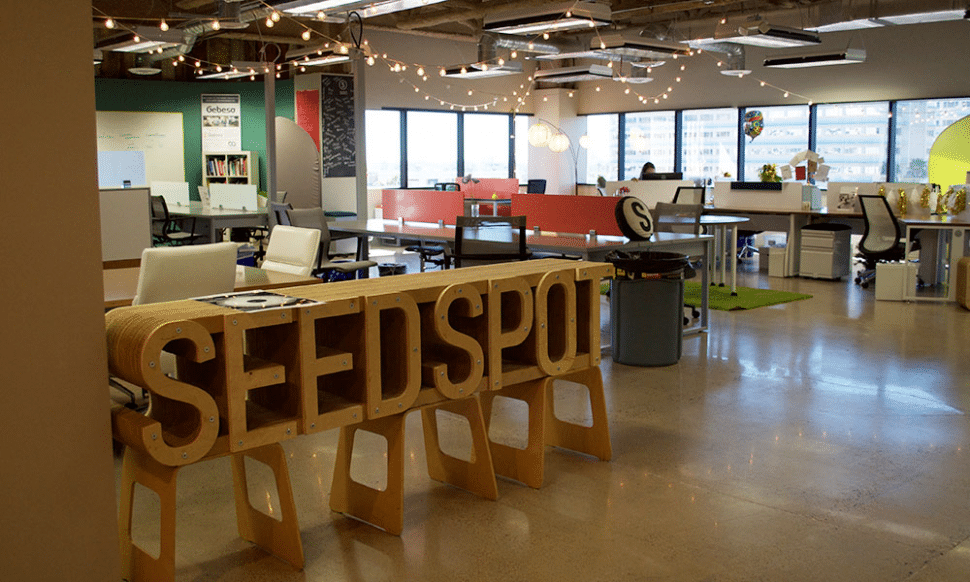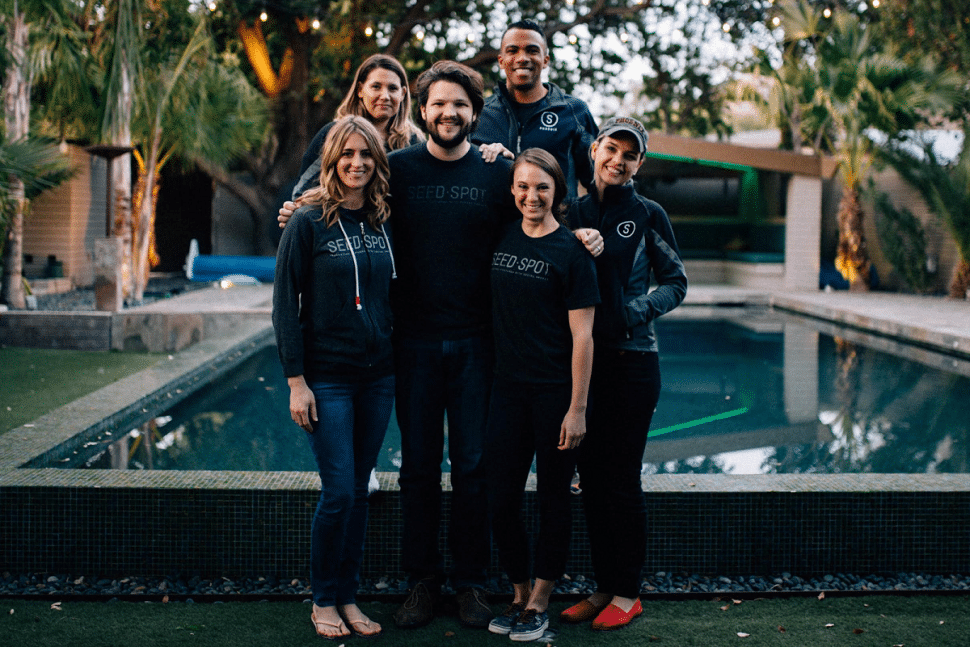By: Corinn Perry, Director of Administration
Chances are, you’ve experienced firsthand the effects of a rapidly globalizing and increasingly technological world. Have you coordinated conference calls across time zones with teammates working remotely in India and Tanzania? Have you resorted largely to Zoom or Skype meetings to connect your whole team? If so, you’re not the only one.
“Telecommuting”, or working remotely, has grown by 103% over the last decade, and a projected 50% of workers will work remotely by 2020. As companies scale and open new locations around the world, workers are abandoning their cubicles in favor of home offices. All they need is a laptop and an Internet connection.
How can companies ranging from startups to Fortune 500s still promote a sense of culture while operating from a distance?
Our SEED SPOT team of eight employees and seven interns is spread across three time zones and five states, ranging from the Pacific Northwest to our nation’s capital. We started in one location, but quickly expanded across the USA to positively impact more entrepreneurs. We are united by a common mission, mindset, and passion to support social entrepreneurs near and far – all fundamental elements of our organizational culture.
Lifting up your core values can help to solidify communication, interpersonal relationships, and warmth within a company. These all lead to a more productive and empowered team to fulfill the mission.
We’ve reached out to Steve Stingle, SEED SPOT mentor and consultant on Organizational and Cultural Development, to break down the process of building a strong and sustainable company culture, even if most communication happens online. Here’s what Steve had to say.
Identify What Culture IS and IS NOT
Beanbag chairs, free cereal, and chalkboard paint – these things may be a fun way to boost morale, but they do not signify culture. True culture is rooted in how employees respect one another, how they conduct themselves with customers, and how they stay accountable for their actions. While company casino trips can be fun, they don’t cultivate company trust or loyalty. They don’t propel your organization’s mission forward either (unless your company literally makes slot machines).
At first, it was hard for SEED SPOT to forge a cultural identity that wasn’t centered around our twinkle-lit Phoenix office. As told by Steve, the SEED SPOT vibe was characterized by “an uplifting buzz of energy created by a flow of purpose-driven people and activities.” How would this vibe transfer through cold and overly formal technological communication? How would we creatively keep our energy and spirit alive?
Don’t Lose Sight of Your Core Values
Eventually, you will have to acknowledge that the way work gets done needs to change. Create new processes centered around your core values, even when operating with a technology dependence. Build those values into your daily meetings, check-ins, and feedback loops. Brainstorm new ways of practicing teamwork and collaboration from afar (we started by creating a #collaborate channel on Slack with inspiration from this article).
Impromptu, casual conversation is also key – we always start each team meeting with personal, life updates. We exchange pictures of our families and vacations in our #real-life Slack channel. Using tools like Slack and Basecamp (which sends out automatic questions your team daily or weekly) can be essential in facilitating impromptu discussions and sustaining a culture when you shift to remote technology.
It Starts with You
A company’s culture is defined by the individual contributions of each team member. Don’t rely on others to reach out – YOU must take the initiative to strengthen interpersonal relationships and keep the culture intact. Sometimes a simple “how’s it going?” can turn a coworker’s day around from afar.
Schedule quarterly “in-person” time with your team if possible. If not, be sure to schedule video calls often, send handwritten cards, and celebrate birthdays and work anniversaries. This also extends to our entrepreneurs – nothing is more important to us than being in the classroom with student entrepreneurs, or watching our ventures pitch on the big stage at DEMO DAY.
There’s No “I” in Culture
If you want an inclusive culture, you must include everyone. Every member of the team must be involved in deciding the tenets of your culture, and they must be revisited often – especially during periods of high growth. The ideas and organization you valued as a team of three will change significantly when your company expands to double digits.
Technology Should Help, Not Hinder
Constantly analyze how your communication tools are serving your organization. Are they causing more trouble than they’re worth? Do you spend too much time deciding whether to post in the #company-announcements vs. #wins vs. #random channel? We’ve all been there. Discuss what’s working as a group, and fix what’s broken quickly.
Progress, Not Perfection
Your culture will grow and evolve with each new intern, contractor, or team member that you add to your company. If you stay attuned to your core values and cultural norms, your company will grow without losing its firm foundation. At SEED SPOT, we acknowledge that our culture is dynamic. As we grow and change, we will continue to keep our values at the forefront of all decisions we make.
To conclude, culture is about helping people work together and be inspired by the work they do every day. Culture in a remote environment can certainly be challenging, but it also enables social enterprises and impact-driven entrepreneurs to have a broader impact across more geographic areas. Now go use technology to your advantage and put your culture first!
Special thanks to Steve Stingle for his advice and contribution in this post, and for helping us grow as better teammates, leaders and entrepreneur supporters at SEED SPOT.
Start your entrepreneurial journey today.
Related articles about SEED SPOT:
>>“3 Ways to Build an Impact-Driven Entrepreneurial Ecosystem”
>>“SEED SPOT Alum, Delighted by Hummus, Scores a Deal on Shark Tank”
>>“2-Day Launch Camps: What Are They and Why Do They Matter?”









